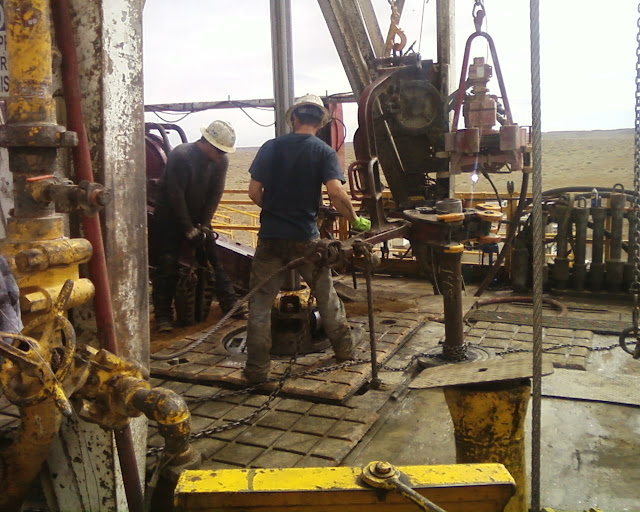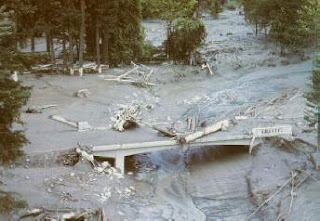So when I go wandering around a professional meeting, like GSA, I see a LOT of things that I would never have done, and I also see things that I would like to never do. Unfortunately I can be a bit hyper-critical, but it is just the way my mind thinks. So here is a list of Do's and Don'ts (mostly don'ts) at a professional meeting. Now since taking pictures of talks or posters and making fun of them online is frowned upon, so there are no pictures associated with these, but trust me they happen (and most happened this meeting).
Posters1. Never ever ever EVER put up the title in separate sheets of paper taped together. I mean really, are we in kindergarten?
2. And while we are on that topic, this is the modern day, don't put up separate sheets of paper with colored construction paper behind each part. Print out a full poster like everyone else. It's not difficult technology, learn it.
3.
Too much text. I saw some posters that had to shrink down the font to fit in all their text. Nobody is going to read that, nobody. Cut it down and make it larger.
4.
Title size. The way I walked through the poster session is I looked at the titles and any that seemed interesting I stopped at. You should make the font size of the title LARGE and the length of the title SHORT. That way people can get the gist of it as they walk by.
5.
Vivid colors. Make your poster stand out. Use large pictures. Make people want to look at it. Your in a session with 100's of other posters. Make yours different.
6. This one is just my feelings. Try to use more technology. I saw one with a projector, this is new and different. Try something that is interesting to get people's interest. Add some showmanship.
Presentations1.
Make yourself presentable. Make it look like you want to be in the front of the room. Exude confidence. I understand this isn't easy for everyone but practice will always help.
2.
Use PowerPoint to work with you. If you want to highlight something, use PowerPoint to emphasize it. Shakily pointing the laser pointer at the screen does nothing to help your talk. Especially if you are nervous and you can't hold the pointer steady.
3.
Busy slides - there are 3 versions this:
A.
Too many graphs. I saw one slide with >20 graphs on one slide. What are you kidding me? Be realistic on what people will be able to understand
B.
Too many pictures. 6 pictures on one slide is just as bad as too many graphs. Break them into different slides so people can actually see what you are looking at.
C.
Too much text. People are NOT going to read a busy slide. They just aren't. Don't kid yourself that this info is important, it doesn't matter. Give the main points and extrapolate in your talk.
4.
Learn to title a talk. If your going to give the title of your talk as a question, MAKE SURE YOU ANSWER THE FREAKING QUESTION in the talk. Also try to make it interesting, if no one understands what you are presenting on, your likely not going to get many people listening.
5.
Sound interested. You obviously think you information is interesting enough to talk about, so sound like it. Monotonous talks are just boring.
6.
Don't overuse PowerPoint. Yes PowerPoint has a lot of neat features. Don't use ALL of them in your talk. The best animation you can use is just "Appear". Unless you have a reason for using a different animation don't use it. Less is more.
7.
Use decent picture. I saw many talks where the person said "now you can't see such and such but it is right here" or "this sign says such and such". Take another freaking picture. You will know almost instantly if your picture is good or not, blurry or not, what you want it to be of or not. I mean really. This should be common sense.
8.
Don't apologize. If you accidentally flip forward just go back. Apologizing just takes the listener out of the talk.
9.
Reference Slide. I didn't actually see this one at GSA but I'm sure it was there. No one is going to sit there and go through your references. Especially if you one stay on the slide for 5 seconds. Get rid of it. Don't use it. I mean really, this should also be common sense. If you have to reference something, reference it on the actual slide where the info takes place, put it on the bottom, in a smaller font, and out of the way.
10.
Don't read off your talk (updated 10-27). Two points here, don't reitterate the title of your talk, more than likely this was already announced by the person introducing you. Also don't read off the slide. The people in the audience can read (probably) so you should just highlight some points on the slide and go into depth in your talk. We are not in 2nd grade and don't need a read-a-long lesson.
That is all I can think of right now. If anyone has any other ideas, let me know and I can add them in.


 They use drilling mud which is a mixture of water and a whole lot of crap. What they do is they pump it down the drill pipeline and it shoots out through holes in the drill bit. This helps keep the bit cool and provides a way to remove all the rocks and flour produced by the rotating bit. Well if you look at the pond above you can see the surface is covered with oil and muck. What is really cool is they had not even gotten to the oil producing layers yet! This is all just stuff in the other rocks layer not worth producing.
They use drilling mud which is a mixture of water and a whole lot of crap. What they do is they pump it down the drill pipeline and it shoots out through holes in the drill bit. This helps keep the bit cool and provides a way to remove all the rocks and flour produced by the rotating bit. Well if you look at the pond above you can see the surface is covered with oil and muck. What is really cool is they had not even gotten to the oil producing layers yet! This is all just stuff in the other rocks layer not worth producing.


























